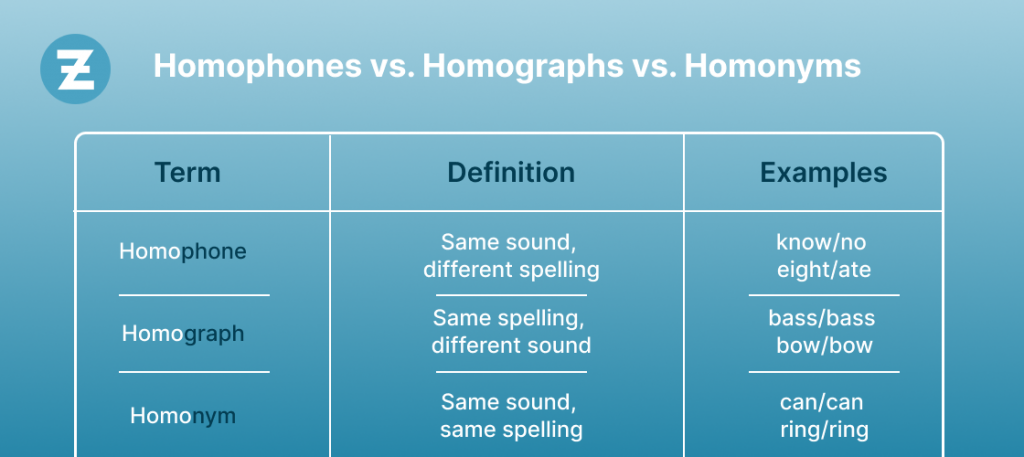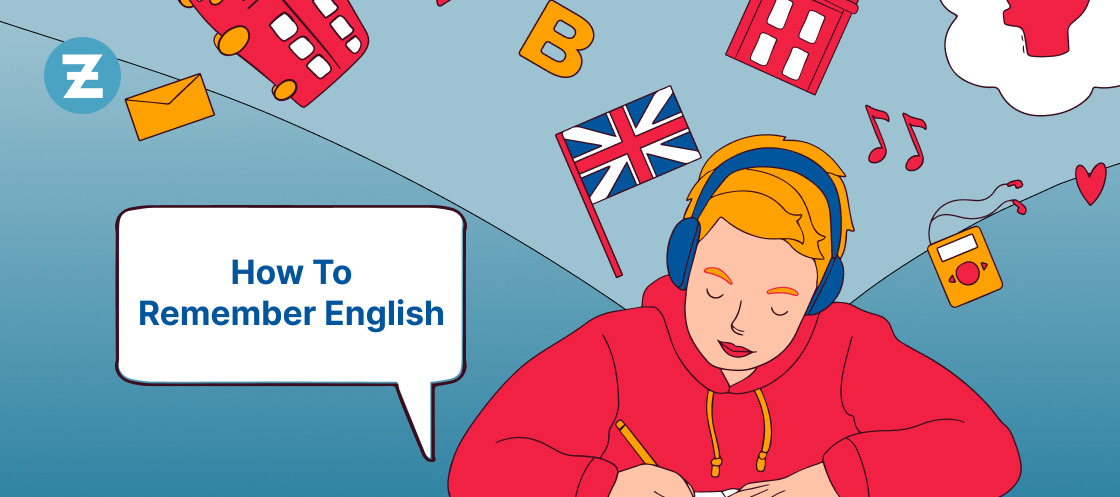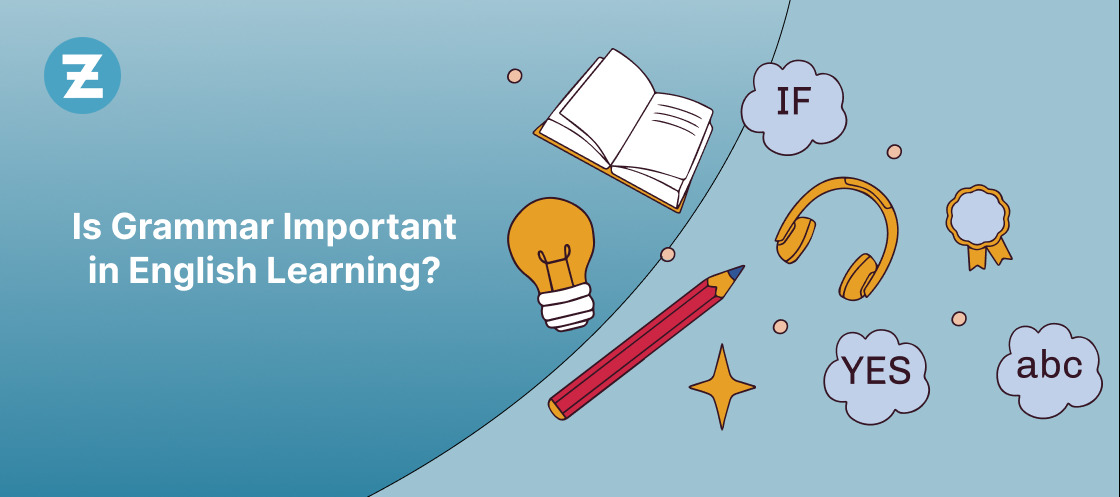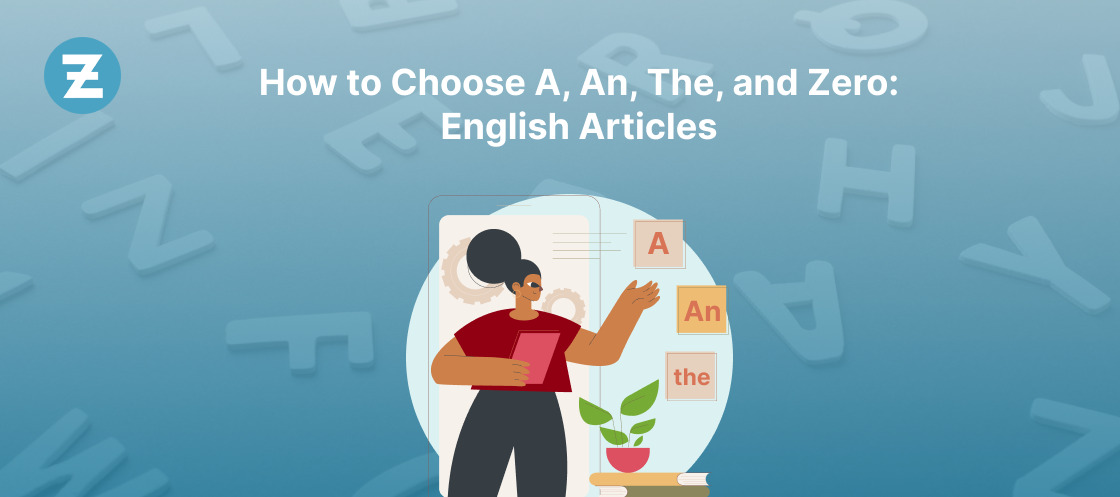Have you ever encountered a word that looks exactly like another one but has a different meaning? Or maybe a word that sounds the same as another but is spelled differently? Confusing, isn’t it?
Well, you’re not alone. Many struggles with homophones, homographs, and homonyms, and understanding the differences can be challenging.
In this blog post, we’ll examine these three types of words and explore their unique characteristics.
So, buckle up and get ready to dive into homophones vs. homographs vs. homonyms!
Read Also: The 187 Most Useful American Slang Words You Need to Know
What are homophones?
Homophones are words that sound the same but have different meanings and spellings. Despite their similar pronunciation, each homophone carries a distinct definition, often confusing written and spoken language.
Here are a few examples of homophones:
- Accept/Except:
- “Accept” means to receive or agree to something.
- “Except” indicates excluding or excluding something/someone.
- Affect/Effect:
- “Affect” is a verb that means to influence or produce a change.
- “Effect” can be a noun or a verb and refers to the result or consequence of something.
- Air/Heir:
- “Air” refers to the invisible gaseous substance surrounding us.
- “Heir” indicates a person who inherits the property or a title.
- Bare/Bear:
- “Bare” means naked or uncovered.
- “Bear” can refer to the animal or the act of carrying or enduring something.
- Coarse/Course:
- “Coarse” describes something rough or having a rough texture.
- “Course” can mean a path, direction, or a series of lessons.
- Hair/Hare:
- “Hair” refers to the strands that grow on our heads and bodies.
- “Hare” is a type of fast-running mammal similar to a rabbit.
- Knew/New:
- “Knew” is the past tense of the verb “know.”
- “New” describes something recently made or discovered.
- Morning/Mourning:
- “Morning” refers to the early part of the day.
- “Mourning” is the act of grieving or expressing sadness for a loss.
- Principal/Principle:
- “Principal” can refer to the head of a school or a sum of money.
- “Principle” indicates a fundamental truth, belief, or rule.
- Stationary/Stationery:
- “Stationary” means not moving or fixed in one place.
- “Stationery” refers to writing materials like paper, pens, and envelopes.
- Tail/Tale:
- “Tail” refers to the rear part of an animal’s body.
- “Tale” means a story or a narrative.
- To/Too/Two:
- “To” is a preposition indicating direction or purpose.
- “Too” means also or excessively.
- “Two” is the numerical value 2.
- Weather/Wether/Whether:
- “Weather” refers to the atmospheric conditions at a specific time and place.
- “Wether” is a castrated male sheep.
- “Whether” is a conjunction used to introduce alternatives or possibilities.
|
Upgrade your English pronunciation and listening abilities with Zoundslike’s interactive learning platform! |
What are homographs?
Homographs are words spelled identically but have different meanings and sometimes different pronunciations. These words can be confusing, as their context and pronunciation often determine their intended sense.
Here are a few examples of homographs:
- “Bass”:
- He caught a large bass (a type of fish) in the lake.
- The bass (low-pitched range) guitar added depth to the music.
- “Bow”:
- She tied a bow (knot with loops) on top of the gift.
- The violinist played a beautiful bow (gesture) across the strings.
- “Desert”:
- The Sahara is a vast desert (arid land).
- Don’t desert (abandon) your friends in times of need.
- “Fine”:
- She paid a fine (penalty) for speeding.
- The fabric had a fine (delicate) texture.
- “Entrance”:
- The grand entrance (way in) of the mansion impressed the guests.
- Her performance on stage was so captivating, it could entrance (mesmerize) the audience.
- “Lie”:
- He told a lie (false statement) to avoid getting in trouble.
- The cat loves to lie (rest) in the sunbeam.
- “Minute”:
- We have only a minute (60 seconds) to complete the task.
- The details of the painting were captured with minute (extremely small) brushstrokes.
- “Offense”:
- He committed a serious offense (crime) and was arrested.
- The team’s offense (attack) scored multiple touchdowns.
- “Patient”:
- The doctor saw a patient (person seeking medical treatment) in the clinic.
- Waiting for the test results requires being patient (having patience).
- “Plain”:
- The landscape was a vast plain (large flat area).
- He expressed his thoughts in plain (simple) language.
- “Row”:
- They row (propel a boat) across the lake.
- There was a heated row (argument) between the siblings.
- “Sow”:
- She decided to sow (plant seeds) vegetables in her garden.
- The sow (female pig) nursed her piglets.
|
Improve your listening and speaking skills in English with Zoundslike’s fun and easy-to-use app! |
What are Homonyms?
Homonyms are words with the same spelling and pronunciation but different meanings. These words can be a source of confusion and require careful interpretation based on the surrounding context.
Here are a few examples of homonyms:
- “Bat”:
- A “bat” can refer to a wooden or metal club used in sports such as baseball or cricket.
- “Bat” is also a term for a flying mammal active at night.
- “Bank”:
- “Bank” can mean a financial institution where people deposit and withdraw money.
- It can also refer to the land alongside a river, such as a riverbank.
- “Fair”:
- “Fair” can mean an event or exhibition showcasing goods and services.
- It can also denote something that is just, unbiased, or impartial.
- “Book”:
- A “book” can refer to a bound collection of pages with text, often used for reading.
- “Book” can also mean to reserve or schedule something, like booking a hotel room.
- “Run”:
- “Run” can mean to move swiftly on foot, such as running in a race.
- It can also refer to operating a machine or organization, like running a business.
- “Tie”:
- “Tie” can mean a strip of fabric worn around the neck, often with a suit.
- It can also refer to the act of securing or fastening something together.
Read Also: 15 English Phrases To Express Your Feelings
Conclusion
In conclusion, homophones vs. homographs vs. homonyms are all important concepts to understand in the English language. While they may seem confusing, they are essential for clear communication and avoiding misunderstandings.
Knowing the differences between these terms can help improve writing and speaking skills, and can also make the learning process more enjoyable. By mastering these concepts, language learners will be well on their way to becoming fluent and confident speakers of English.
If you want to improve your pronunciation and spelling, Zoundslike is an excellent online language learning game that you can use for free. Download it now and get started.
FAQs
Q.1 How can I differentiate between homophones, homographs, and homonyms?
Understanding the context and spelling of the word is key. Homophones differ in spelling but sound the same, homographs have the same spelling but different meanings, and homonyms share both spelling and pronunciation but have different meanings.
Q.2 Why are homophones, homographs, and homonyms important?
These linguistic concepts are crucial for effective communication. Proper usage ensures clarity and helps avoid misunderstandings in spoken and written language.








